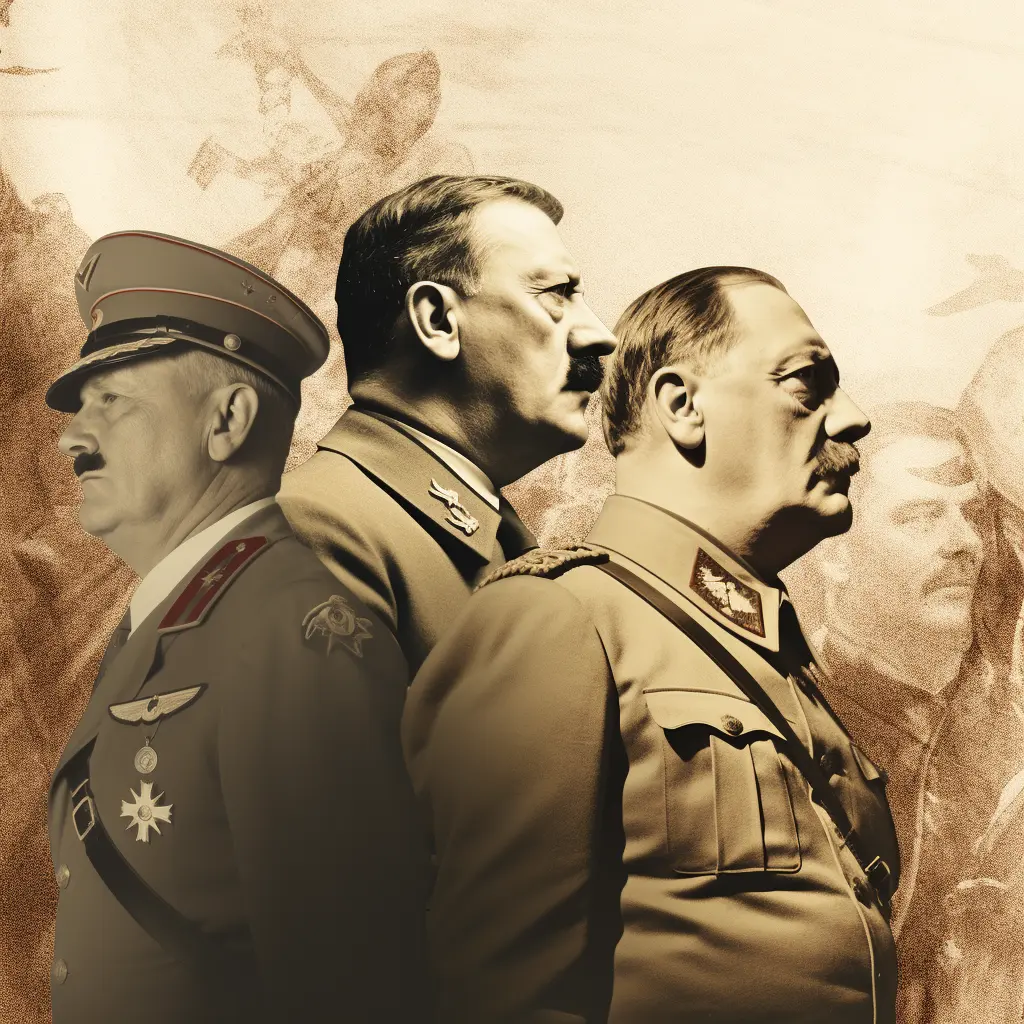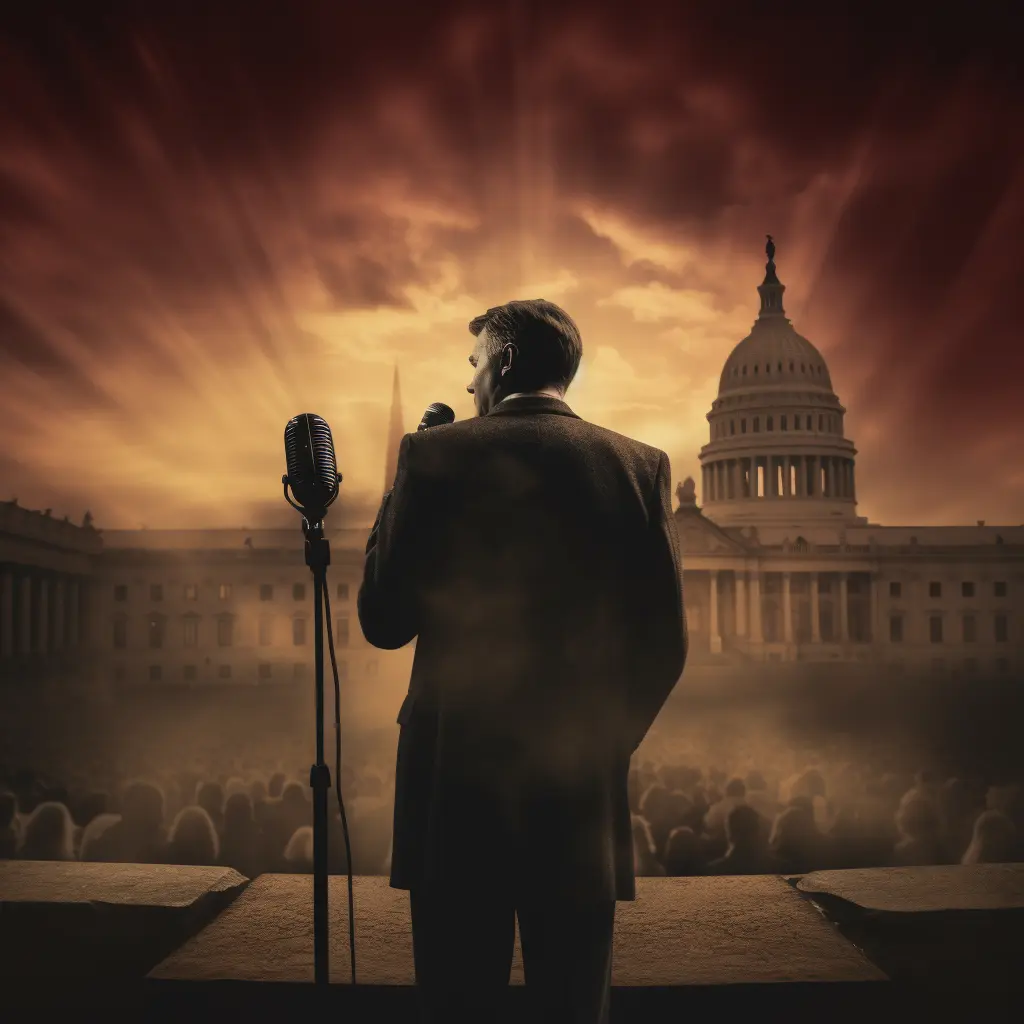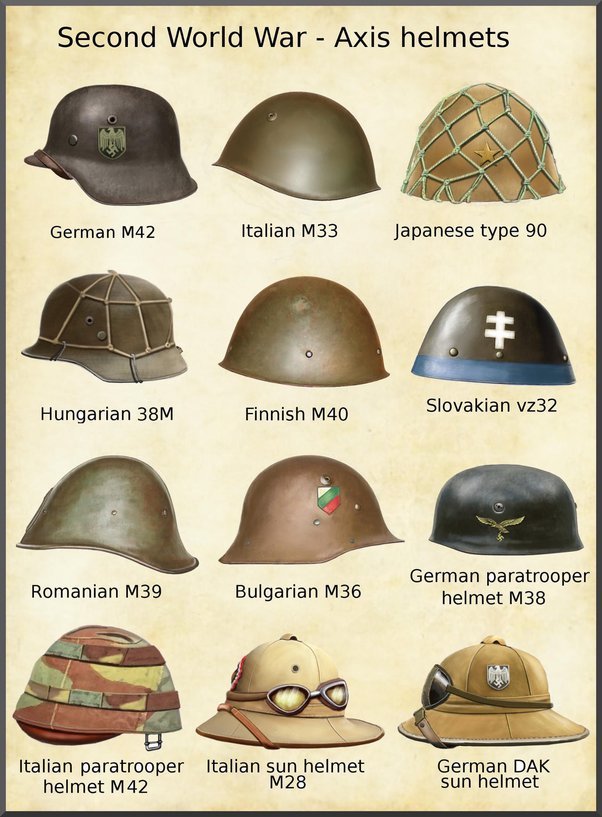
Brief Overview of WWII
The Second World War, spanning between 1939-1945, saw numerous nations embroiled in a global conflict that significantly shaped the 20th century. The introduction of advanced weaponry and protective gear, including helmets, marked a major shift in combat tactics. These helmets, utilized by varying factions, often served as critical protection against shrapnel and bullets, contributing to soldiers’ survival in one of history’s deadliest conflicts. They remain symbols of courage, resilience, and technological advancement.
Significance of Helmets in World War II
The headgear donned by soldiers during World War II was not merely a part of their uniforms but an essential piece of protective gear that played a significant role in their survival on the battlefield. The helmets were designed to shield the wearer’s head from shrapnel and debris caused by artillery fire. This not only reduced the risk of fatal head injuries but also boosted the morale of the soldiers, knowing that they had tangible protection.
It’s fascinating to note that these helmets were not just practical, they also held symbolic value. Different nations had distinct designs, and colors painted on them represented ranks or specific roles. Thus, these World War II helmets were an integral blend of functionality, identification, and symbolism. They are a compelling symbol of a soldier’s resilience and bravery.
Evolution of Helmets during WWII
Design changes from WWI to WWII Helmets
The transformation from World War I to World War II headgear marked a significant milestone in the military’s approach to protective wear. Painted in olive drab, WWI helmets were shallow in structure with a broad brim, providing meager protection from shrapnel. The WWII helmets, on the other hand, showcased a superior, in-depth design overhaul geared towards enhanced soldier safety. These helmets bore a deeper pot design sans a brim. The inclusion of an added liner system enhanced comfort levels and ensured a snug fit.
Influence of Technological Advances on WWII Helmets
During WWII, rapid strides in technology moulded not just military machinery, but also smaller items such as combat helmets. New manufacturing techniques and improved materials enhanced their protective capabilities. Significant progress in steel metallurgy allowed for sturdier helmets, effectively reducing battlefield fatalities. Novel designs, such as the German Stahlhelm, optimised for protection and comfort, signified a shift in the standard of protective gear. Furthermore, the integration of communication equipment into helmets revolutionised warfare by facilitating better coordination among troops. Thus, WWII witnessed a paradigm shift in the design and functionality of helmets.
Shift in Manufacturing Materials in Helmets during WWII
During WWII, there was a significant transition in the materials used to manufacture helmets. Initially, helmets were composed of hadfield manganese steel, however, due to increased demand and scarcity of materials, manufacturers switched to low-carbon steel. Although providing less ballistic protection, this alternate was easier to produce on a massive scale. Moreover, low-carbon steel allowed for streamlined manufacturing, thus enabling quicker helmet distribution to soldiers on the battlefield.
Helmets by Countries in WWII
United States M1 Helmet
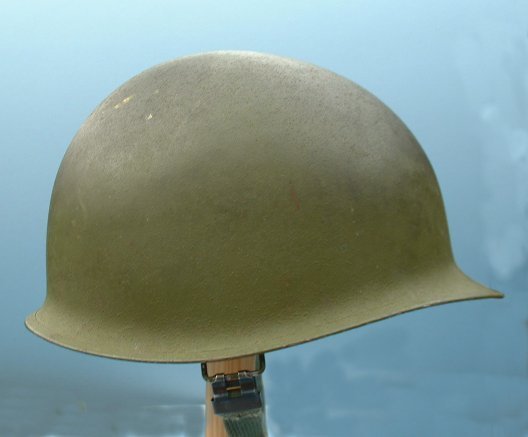
Introduced in 1941, the M1 helmet served as a staple for the U.S. military, providing robust protection for troops throughout the Second World War. Its unique two-piece design, comprising a steel outer shell and an inner plastic liner, offered improved safety compared to other helmets of the time. The M1 was also known for its adjustable chin strap, that allowed a secure and custom fit. Many also came adorned with rank, unit, or other insignia, serving dual-duty in protection and identification. It remained in service for several decades post-war, testifying to its effectiveness and the innovative design it encapsulated.
German Stahlhelm, Model 1935
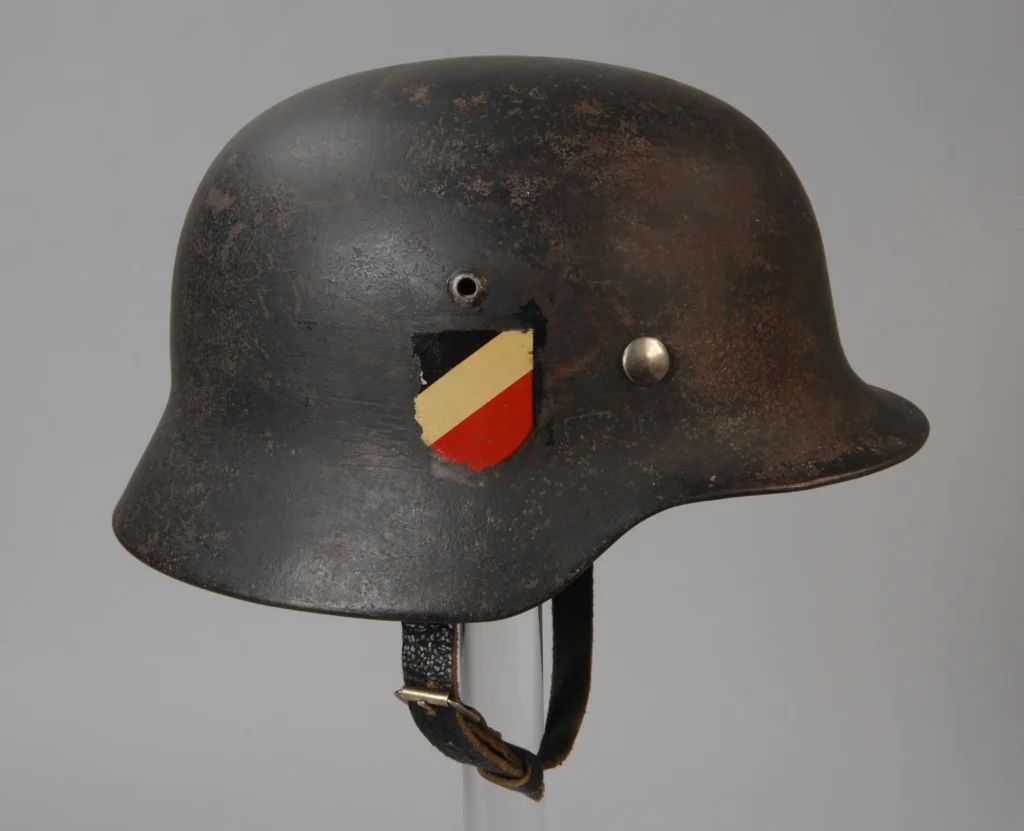
Introduced for the German troops in 1935, the Stahlhelm M35 was an innovative design and was known for its superior protection. Crafted from sheets of molybdenum steel, its solid construction featured a visor and flared skirt to shield the wearer’s neck and ears. The M35 model was distinguished by side vent holes and a uniform field grey color. It was sector-specific, with insignias denoting different units: the Luftwaffe eagle for air force, the army’s decal, and the insignia for navy or Waffen SS. Its durability, design, and protective features made it iconic, trendsetting a modern standard for military headgear.
Soviet SSh-40 Helmet

In the midst of WWII, the USSR empowered its soldiers with the robust SSh-40 helmet, known for its simplistic, resilient design. Constructed from low-alloy steel, it was mass-produced from 1940-1945, effectively sheltering millions of Soviet soldiers during turbulent times. It featured an innovative three-pad liner system for fitting versatility—propelling it ahead of its predecessors, the SSh-36 and the SSh-39. While its rounded design was strategically crafted for deflecting blows, it couldn’t effectively shield soldiers from direct hits— a flaw which nonetheless didn’t overshadow its widespread use and distinctive impact in the era.
British Brodie Helmet

Developed by John Leopold Brodie during the First World War, the Brodie helmet continued its service into WWII, providing significant protection to the British soldiers. This round, steel helmet was a symbol of British troops with its distinctive wide brim and shallow crown. It protected the wearer’s head and shoulders from shrapnel while its liner offered a degree of comfort. Additionally, its khaki wool cover helped in concealment. Its design which was intended to protect from overhead attacks aptly met the trench warfare requirements, making it an iconic image of the British ‘Tommy’ during the tumult of WWII.
Japanese Type 90 Helmet

The helmet donned by the Japanese forces in WWII was the Type 90, recognizable for its unique form and structure. It was composed of a protruding rim and flared sides, providing a form of neck protection. The lid had a ventilator star at the front center, functioning as both the helmet’s vent point and the anchor for the star insignia of the Japanese military – a feature setting it apart from its contemporaries. It used an inner liner and a four-pad cushioning system for added comfort while a woven, adjustable chinstrap ensured the helmet remained secured during combat scenarios.
Symbolism and Art on WWII Helmets
Significance and Interpretation of Helmet Art
The headgear donned by soldiers during the Second World War carried more than just a protective function; they served as canvases for personal expression and symbolic messages. In the face of the grotesque horror of war, helmet art allowed soldiers to carry a piece of individuality and home with them on the battlefield. These designs often encompassed unit identifiers, patriotic imagery, and even comic and pin-up illustrations, portraying a unique mix of defiance, camaraderie, and longing for peace. The interpretation of such art offers an intimate glimpse into the minds and emotions of the men who bravely fought in the war, making them cherished historical artefacts.
Popular Symbols on American, British, and German Helmets
During WWII, emblematic insignias adorned the combat helmets of American, British, and German soldiers. The U.S. forces often bore the markings of their particular division or unit; a prevalent example being the white stars emblem, signifying ‘Allied forces’. The British ‘Tommy’ helmets, while usually devoid of any symbolism, occasionally featured unit-specific designs. The Germans, on the other hand, utilized a more diverse palette of insignia; the most recognizable being the SS runes or an eagle clutching a swastika, embodying their ideologies. These symbols were a vital tool for identification, morale boosting, and promoting unity within the ranks.
The Effectiveness of WWII Helmets
Protection Level of WWII Helmets
During the second global conflict, helmets were integral in safeguarding soldiers from ballistic impacts, artillery fragments, and blunt traumas. Particularly, the U.S. M1 and German Stahlhelm showcased advancements in protective headgear. While neither could reliably deflect direct gunfire, they were highly effective against shrapnel and debris resulting from explosions.
Notably, the M1 was double-layered, with a detachable outer shell that could further diffuse the force of impacts. Meanwhile, the Stahlhelm offered wider coverage, protecting the neck and ears. Despite their practical limitations, these helmets undoubtedly saved countless lives and underscored the importance of protective gear in military conflicts.
Comparison with Modern Helmets
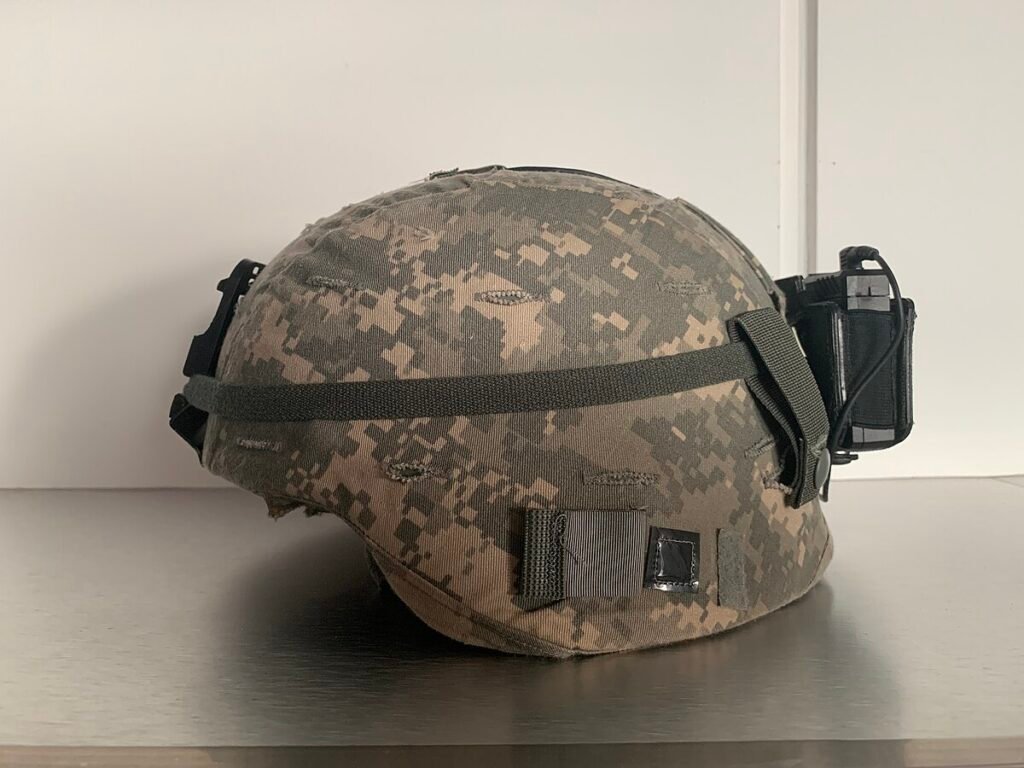
When contrasted with contemporary versions, helmets from the Second World War period underline the significant advancements in protection technology. Today’s military helmets provide superior comfort, fit, and safety, all while maintaining or even reducing weight.
They are designed with fresh materials to resist penetration from bullets and shell fragments, and they also have improved suspension systems to better absorb shock from impacts. Additionally, the advent of modular helmet accessories and integrated communication equipment is a stark contrast to the simplistic designs of the 1940s. Evolution in liner materials and designs have also contributed to improved cushioning and sheer resistance.
Conclusion
Reflection on the Historical Importance of WWII Helmets
In summing up, helmets used during WWII were more than protective gear; they were symbols serving various purposes and significantly influenced subsequent helmet designs. Their historical importance is underscored not only by their design changes that reflect the strategic evolutions during this era, but also by the stories of survival and valor associated with them. These pieces of history, infusing life into inanimate objects, offer splendid narrations about a pivotal period of time that changed the world.
Enduring Legacy of WWII Helmets in Popular Culture
In wrapping up, the indelible mark of WWII helmets on popular culture cannot be overstated. Their portrayal in diverse media platforms, from films and literature to fashion and art, stands as a testament to their continuing relevance. These iconic pieces are indomitable symbols of courage, sacrifice, and resilience, often used to evoke specific eras, emotions, or themes. More than mere vintage collectibles, they are enduring relics, shaping the way we remember and understand one of history’s most pivotal periods.

